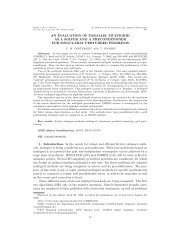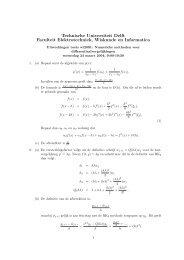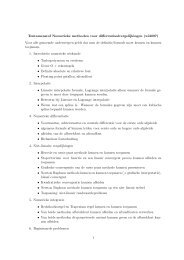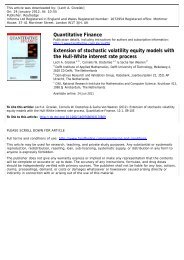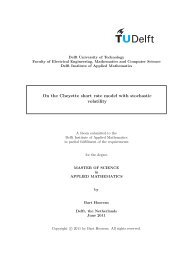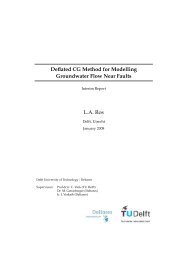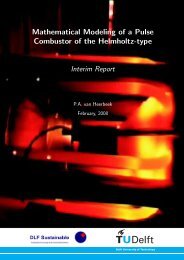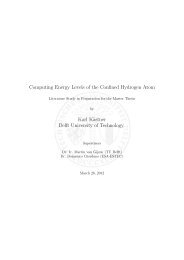Create successful ePaper yourself
Turn your PDF publications into a flip-book with our unique Google optimized e-Paper software.
Chapter 6Numerical Tests and Experiments6.1 IntroductionAfter presenting all the theory, which was needed, we can start to work in finding a good,parallel-friendly, solver for linear systems which are generated by Plaxis software. We havealready done some tests, which are presented in the Literature Study Report and we will notshow them again. However, we will recall our initial guess for the method which we will use tosolve systems.6.2 Choice of the MethodInitially we have chosen, a Domain Decomposition approach was a starting point for solvingthe problem, due to the fact of the good results noted in this field of mathematics. Nowadays,domain decomposition methods are getting more popular, because the underlying idea givesplenty of possibilities to parallelize the solution process, which is a wanted property whensolving big systems of equations.From the big family of methods of this branch of mathematics, we have chosen to use oneof the Schwarz Alternating Processes approaches, i.e the Additive Schwarz Method (ASM)as our solver. First reason for it was the fact, that the code can be easily converted into aparallel program. Secondly, there was already a try to use a Schur Complement approach, butthe results were not as good as it was expected. Also there are examples of many successfulimplementations of Schwarz methods in real life problems, which only encouraged us to takeASM as our framebox for the solution of the linear systems.Now when we have chosen ASM, to be our main core of the solver, we are going to upgrade it,by incorporating onto it two methods, which were presented in this report, i.e. PreconditionedConjugate Gradient Method, for the solution of the linear systems of the subdomains, and theDeflation method to improve the spread of the information coming from one subdomain toother ones. This combined together is going to be our tool in solving the linear systems.The choice of the subdomains on which we will perform the ASM is going to be done notby an arbitrary cut of the coefficient matrix. Instead, we are going to create the blocks in thepreconditioner, by adding the elements from the FEM process, which contribute to an area ofthe same material type. In this way, we will have a possibility to incorporate an intelligentpartition of the domain, which will preserve the physical structure of the problem.32




